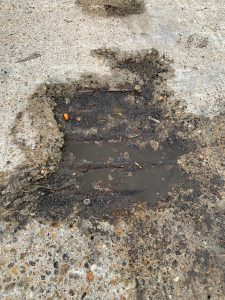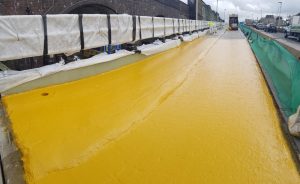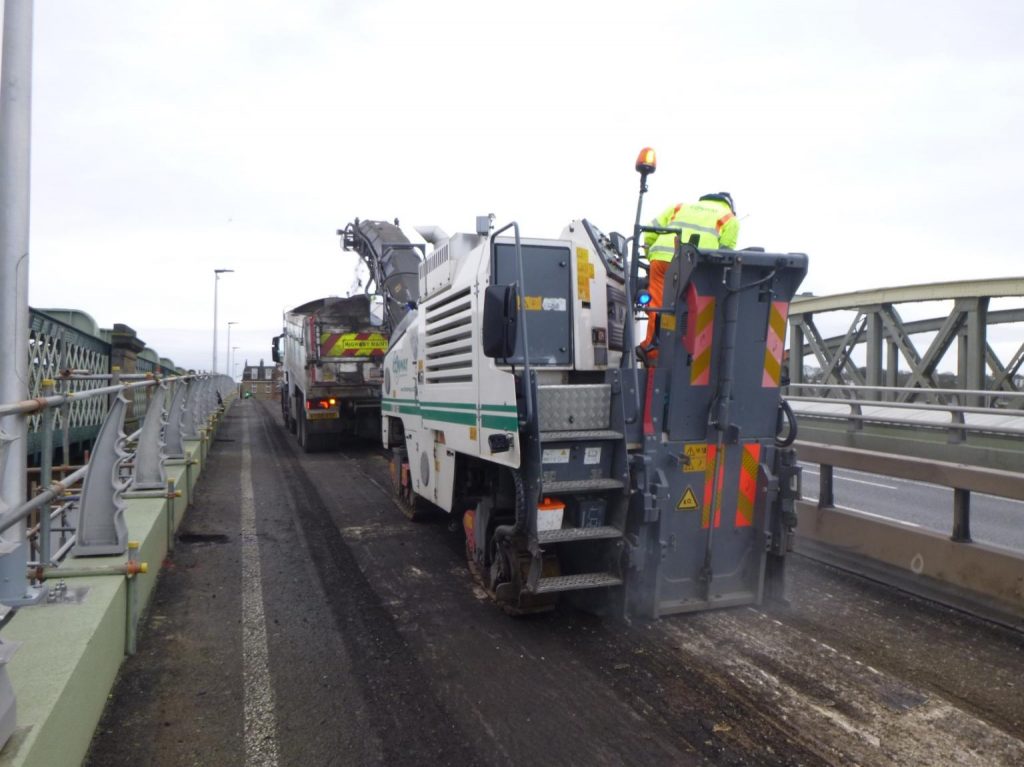For a substance that is so useful to us in so many ways, water can also be pretty unforgiving to the built environment.
Whether it’s one of February’s storms or just a light shower, over time water will inevitably corrode metal. While it’s annoying when that means you need to oil a rusty garden gate or a clean-up is needed because your bicycle chain starts squeaking, when it comes to a bridge, if it’s not properly maintained rainwater can create a serious structural risk to steel beams and even the reinforcing bars in concrete – and with an annual average of 109 rainy days in Rochester, this is something we take very seriously.
The current waterproofing on the New Bridge is now 20 years old and coming to the end of its useful life, which means this is an important task for FM Conway to organise during the Rochester Bridge Refurbishment Project. To enable the work to take place, we have to temporarily reduce the public area of the bridge.
Waterproofing is a layer of specialist synthetic material inserted underneath the tarmac and asphalt of the road surface. This means that to replace it, we first have to remove all that surfacing – and then remove that existing waterproofing.
Doing that exposes the underlying concrete and steel structure. We’ve already taken up the surface on the pedestrian and cycle area of the crossing (see the picture at top of this page), and found that while that structure was generally in excellent condition, some localised repairs are needed. This means it’s likely there will be other small areas in need of repair on the rest of the bridge too – waterproofing is only effective if it’s applied to a clean, sound surface.
The work also exposes the location of what we call expansion joints. Every bridge expands and contracts slightly as the temperature changes through the day and through the year, and the New Bridge has six joints to allow for that movement. In order to be able to renew the joints, new concrete needs to be applied to the edges of the concrete to give a clean, square edge where a new joint can be installed.
Once the concrete repairs have been given time to cure (imagine watching paint dry), we spray a waterproof membrane over the surface and give it time to set. Then we can put in the new kerbs and begin rebuilding the road surface – including the cycleway and footway – layer by layer.
This has to be done across all lanes. The first section is being done with both lanes of traffic still running but to do the main traffic area we will have to close one lane at a time.
This is by no means an easy process, but it’s vital to making sure the new waterproofing does its job and keeps the bridge in a good, safe condition for many years to come.












